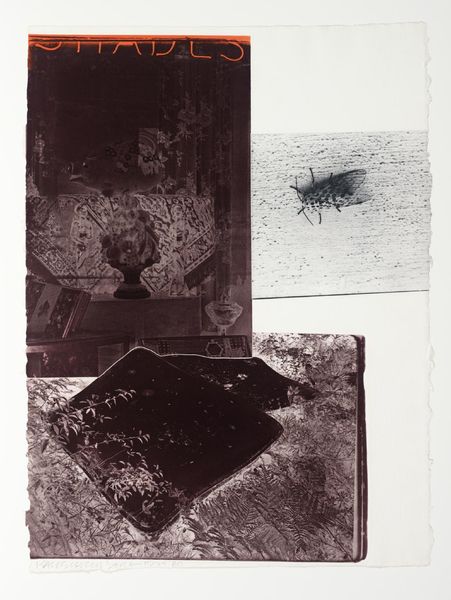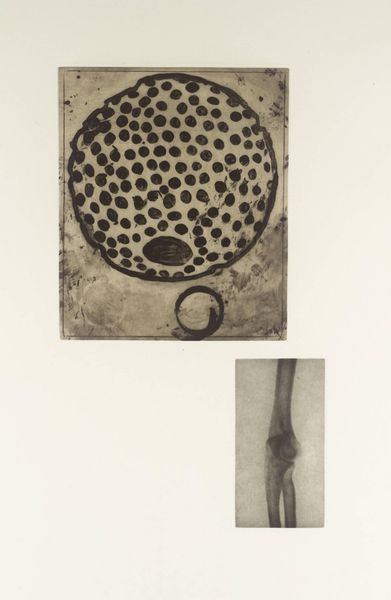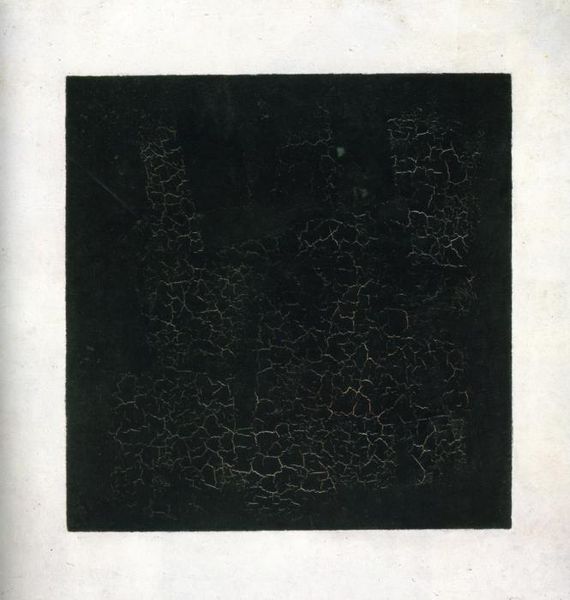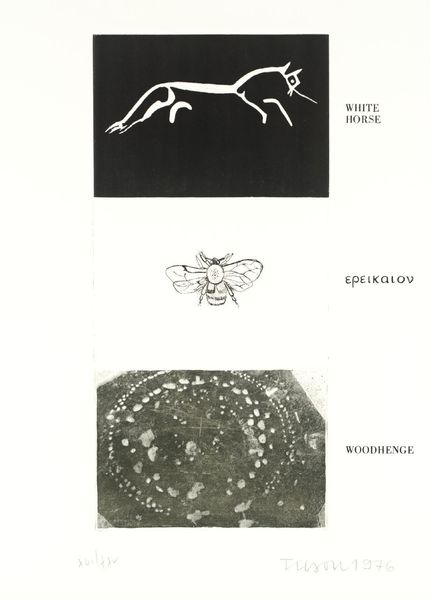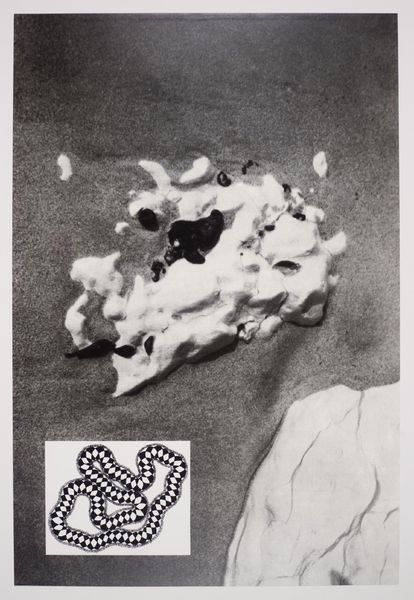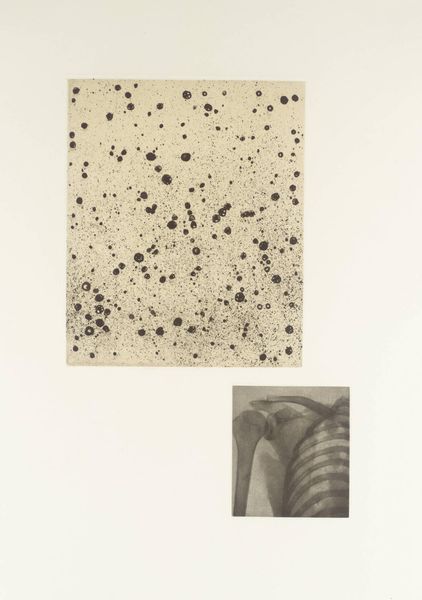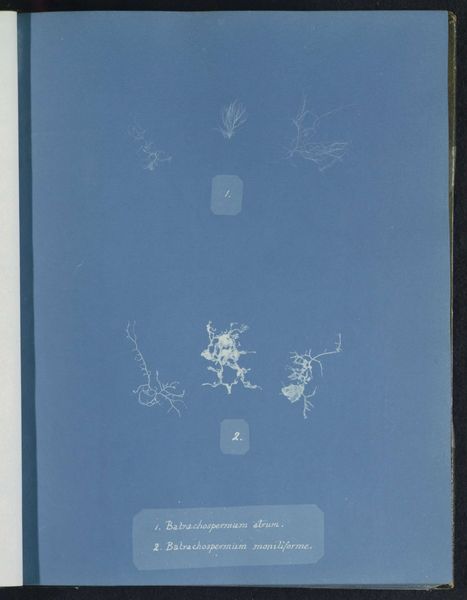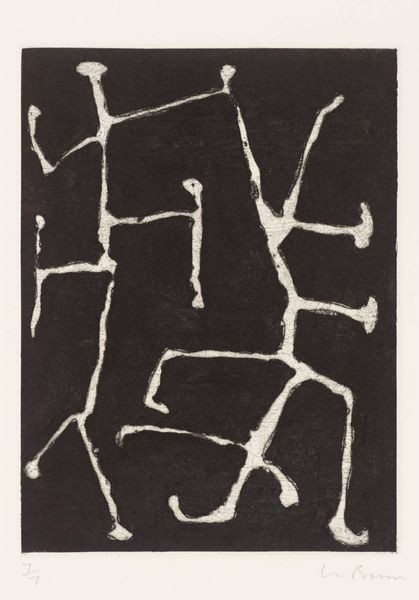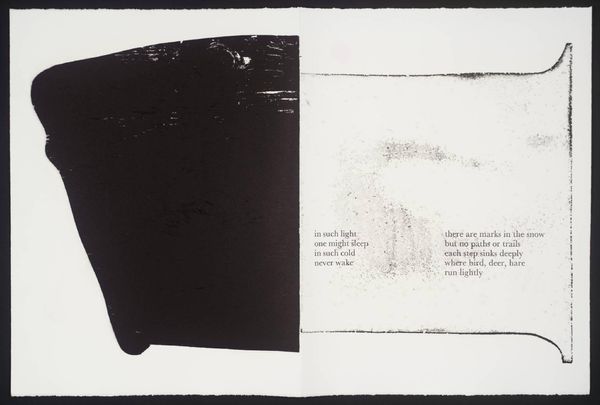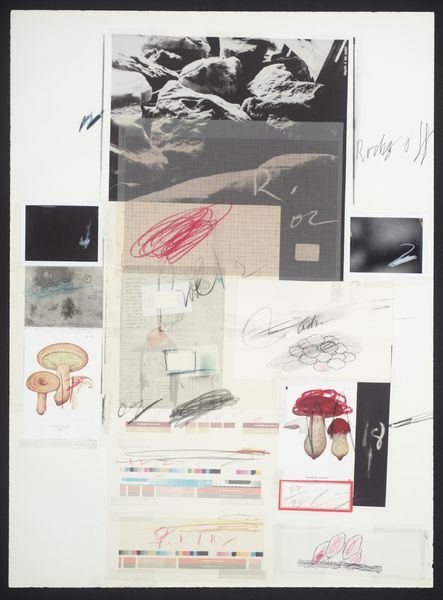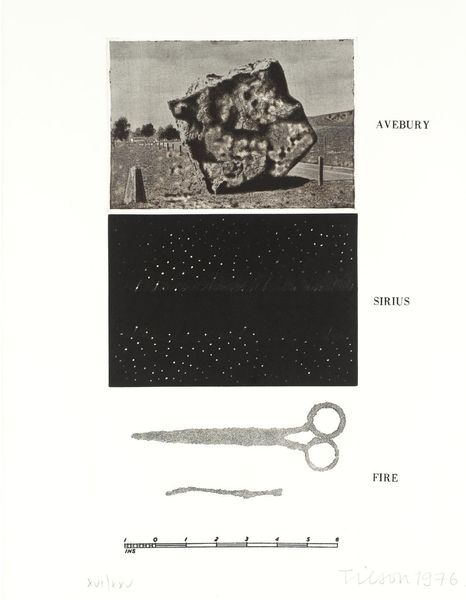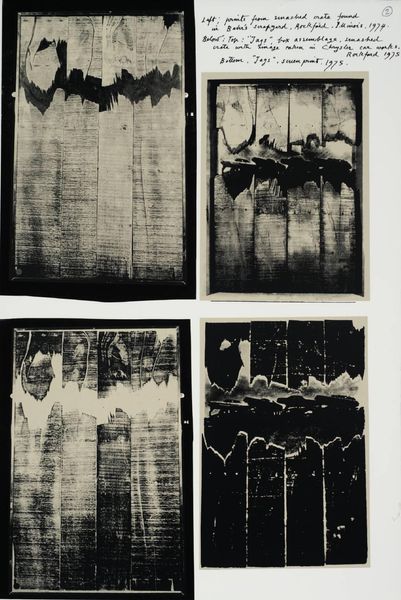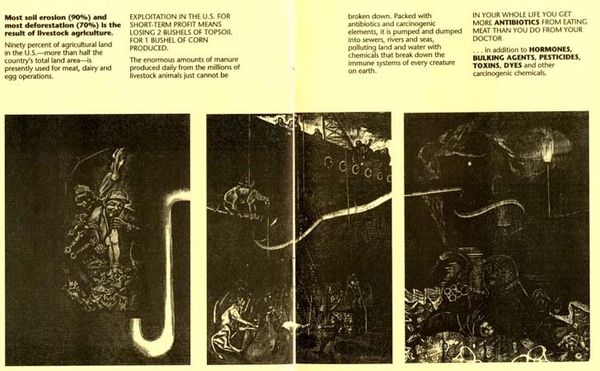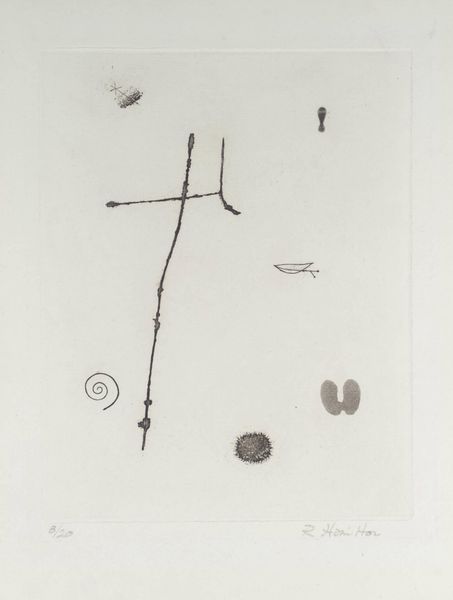
mixed-media, photography, installation-art
#
mixed-media
#
conceptual-art
#
text art
#
text
#
photography
#
installation-art
Copyright: Douglas Huebler,Fair Use
Curator: Douglas Huebler’s "Variable Piece #150" from 1973 is a fascinating example of conceptual art. It combines photography, text, and map elements into a mixed-media installation. Editor: It’s immediately striking, almost unsettling. The grainy photo at the top—is that some kind of discarded organic matter, maybe rope?—has this very bleak, abandoned feel. And then you have all these textual and map elements competing for attention below. Curator: Huebler was deeply interested in exploring the limitations and possibilities of art. What does it mean to create art that emphasizes ideas over traditional aesthetics or skills? How does photography document or distort reality? The piece documents an action performed repeatedly at set coordinates. He invites the viewer to piece together the story, a location based task and photographs to fulfill the prompt. Editor: I see that connection between the tangible and the intangible, between instructions, materials, action and meaning, absolutely. In this work he draws attention to production, but also consumption of instructions, material waste. This highlights art's link to broader systems of labor, and consumer habits in art institutions. Curator: Precisely. He challenges the conventional museum-goer expectation. The combination of photos, instructions, even film strips, asks viewers to actively participate in the piece’s narrative and, by extension, confront the limitations of photography as objective truth. The museum becomes a space for intellectual work, not passive viewing. How do these processes relate to production as well as archiving meaning within a culture? Editor: It speaks to the artist’s hand being less visible, as well as highlighting art's engagement with political issues, cultural narratives and how it influences social behaviors.. The inclusion of text and cartography invites scrutiny to a variety of cultural conventions and production processes. Curator: Exactly. We might also consider how his ephemeral and non-collectable Variable Pieces like these question the traditional art market itself. What happens when art cannot be easily bought or sold? Editor: It democratizes it in a sense, because what’s important becomes the engagement with the concept, rather than the ownership of an object. That shift changes everything—who gets to participate in the art world, how art gets valued, what we consider art to be in the first place. Thanks for illuminating the piece through this conceptual lens. I definitely see it differently now.
Comments
No comments
Be the first to comment and join the conversation on the ultimate creative platform.
